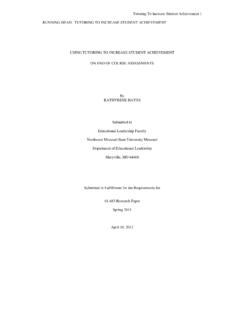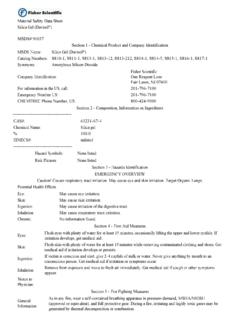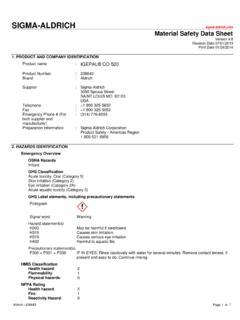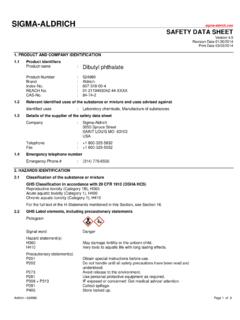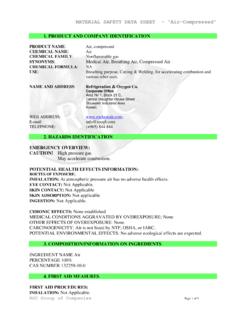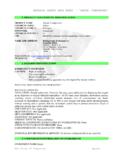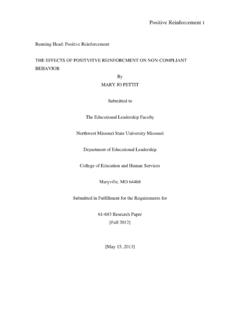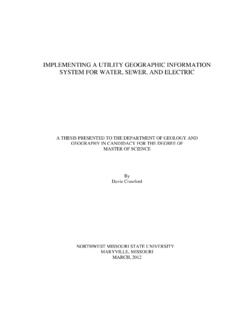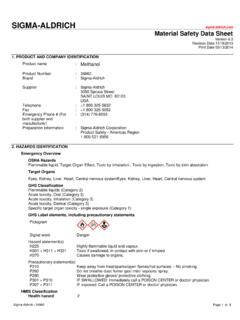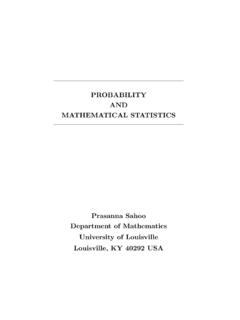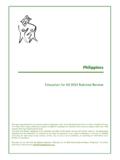Transcription of Accelerated Reader and Its Correlation to Test Scores
1 Accelerated Reader and Its Correlation to Test Scores 1 Accelerated Reader AND ITS Correlation TO ASSESSMENT Scores By MELANIE A. FUEMMELER Submitted to The Faculty of the Educational Specialist Program Northwest Missouri State University Missouri Department of Educational Leadership College of Education and Human Services Maryville, MO 64468 Field Study Committee Members Dr. Phillip E. Messner Dr. Kristi Alexander Submitted in Fulfillment of Graduation Requirements for 61-723 WRITING & INTERPRETING EDUCATIONAL LITERATURE AND STATISTICS AND 61-724 FIELD STUDY Spring 2013 Accelerated Reader and Its Correlation to Test Scores 2 ABSTRACT This study consisted of four 5th grade classrooms in four different elementary schools. Two of the four classrooms were traditional classes where paper and pencil methods were those most utilized for instructional purposes.
2 Of these two classrooms, one teacher used Accelerated Reader extensively and with fidelity and the other did not use the program at all. The other two classrooms were part of the district s FLiP initiative where each student had their own laptop. Of these two classrooms, one teacher extensively used Accelerated Reader and one teacher did not. The purpose was to determine if Accelerated Reader should continue to be funded by the district. This would be determined through how extensively teachers used the program, and how using the program translated to student test Scores and reading levels. The first step conducted within the study was to determine how many teachers were using the program and how often they were using it. After this survey was completed individual teachers were interview based on their usage of the program, addressing how it enhanced instruction and student s overall achievement in reading.
3 From there, Star Reading assessment data was collected from the four teachers interviewed to determine whether the numbers supported the theories they believed to be true. The study found that on a scale of 1-5, teachers rank at a in terms of how often they use the program. Overall, it is used as a reading comprehension tool to quiz students on how well they understood a text. When analyzing data, those students who were in classrooms where Accelerated Reader was being used scored higher than those students who were not in classrooms using the program. Students who were in FLiP classrooms scored slightly lower than those in a traditional educational setting. The score variances were so minute it is undetermined whether the FLiP classroom has a positive or negative effect on computerized assessments.
4 Accelerated Reader and Its Correlation to Test Scores 3 TABLE OF CONTENTS LIST OF TABLES AND FIGURES ..5 chapter ONE: INTRODUCTION TO THE Background Conceptual Underpinnings for the Study Statement of the Problem Purpose of Study Research Questions Null Hypotheses Limitations and Delimitations Anticipated Benefits of Study Summary chapter TWO: REVIEW OF RELATED Theoretical Context for Accelerated Reader and Student Achievement Overview of Accelerated Reader and Student Achievement Findings Implications for Institutions chapter THREE: RESEARCH DESIGN AND Problem and Purposes Overview Research Design Research Questions Accelerated Reader and Its Correlation to Test Scores 4 Study Group Data Collection and Instrumentation Data Analysis Methods Summary chapter FOUR: PRESENTATION AND ANALYSIS OF Review of Research Design Findings by Survey Item Summary chapter FIVE.
5 OVERVIEW, FINDINGS, AND Overview Restatement of Purpose Discussion of Findings, Conclusions and Recommendations Summary Reader and Its Correlation to Test Scores 5 LIST OF TABLES AND FIGURES Table 1: Effect Sizes of K-6 Students Using Accelerated Reader from Ross et al. Study Table 2: t-test Correlation of Student ATOS Scores Based on AR Usability of Table 3: t-test Correlation of Student ATOS Scores Based on Technology Usage of Figure 1: Bar Graph of Teacher Usability for Accelerated Figure 2: Bar Graph of How Teachers Use Accelerated Reader in Figure 3: Bar Graph of Accelerated Reader Accelerated Reader and Its Correlation to Test Scores 6 chapter ONE: INTRODUCTION TO THE STUDY Background Funding for public education has long been a political topic in the United States.
6 Student achievement and districts serving in public education are in constant comparison to other countries that do not seem to have the same issue in providing equitable funding to all students in all schools. However, the United States struggles with this issue year after year as all stakeholders anxiously await budget approvals and state and federal funding information in April and May. So, with this begs the question of, How directly does the level of funding affect student achievement? A vast array of studies and research has been dedicated to this very topic, and the results are as varied as the students served in public education. In a study conducted by the International Association for the Advancement of Educational Achievement entitled Mathematics Benchmarking Report, data was used from the Third International Mathematics and Science Study (TIMSS) to compare 8th grade mathematics Scores with students of other nations to students from specific states, district, and school consortia in the United States.
7 Their findings aligned with the popular notion that the more funding an area receives and the less impoverished students they serve, the higher the achievement Scores for those students. Specifically, they found the highest achieving schools in the United States to be Naperville, Illinois Public Schools and First-in-the-World Consortium which is composed of school districts from the Chicago North Shore Area. These two districts receive high levels of funding and serve a low number of students living in poverty, comparable to such high-achieving countries as Hong Kong and Japan who are similar in size and demographics. Likewise, the lowest achieving districts were Miami-Dade County Public Schools in Florida and Rochester School District in New York. Both of Accelerated Reader and Its Correlation to Test Scores 7 these public school districts receive low amounts of funding while serving a high population of students living in poverty.
8 This is comparable to other low-achieving countries such as Turkey, Jordan, and Iran who also closely resemble these school districts in size and demographics (cite). Thus, based on this study, it would be acceptable to insert the proverbial line that runs rampant from the mouths of many in this country believing the rich get richer, and the poor get poorer. The variables playing into this notion are numerous, which include but are not limited to the suburban growth and urban decline in the sixties, the varied beliefs about the causes of poverty, and most importantly the allocations of increased funding in the public school system. For example, many make the argument that funding has increased, but student achievement has not, so why continue pouring money into a broken system? However, if you look more closely at how those dollars are allocated the breakout looks something like this: 33% to special education students, 8% to dropout prevention programs, alternative instruction, and counseling to keep students in schools, 8% to expand school lunch programs, and 28% to increase the salaries for the teaching population.
9 Very little of that has gone into instructional measures, thus resulting in little to no difference made in student achievement (cite). It should also be noted that those school districts who do receive higher levels of funding are able to recruit more highly-qualified teachers as well as reduce class size--two key variables in raising student achievement. While research can be found to support both sides of this issue it is something that must remain at the forefront of administrative minds in order to wisely spend the dollars allotted to school districts. As Rob Greenwald, Henry Hedges, and Richard Laine concluded from their study, [Our analysis shows] that school resources are systematically related to student achievement and that those relations are large [and] educationally important. Should this be the case, it must be ensured that the resources getting these precious dollars are actually improving Accelerated Reader and Its Correlation to Test Scores 8 student achievement and being used to their full capacity.
10 Therefore, an efficiency and effectiveness test needs to be put in place for all programs and resources to which large amounts of funding are being allocated within schools and districts. Conceptual Underpinnings This study is grounded in the efficiency theory (Archer, 2010). More specifically Education Efficiency is addressed in recognition that, Education is the foundation of society. As we look across the world, most educated societies are invariably the most advanced and prosperous societies. We can see this not only by comparing nations, but by comparing cities and the districts and neighborhoods within cities. However, it s important to understand that education comes in many forms and through many mediums. Most of these mediums are institutions that are not concerned with efficiency. Instead they seek to instill a belief system, produce academic statistics that make them look good, or simply make money by focusing on the business aspect of education.
